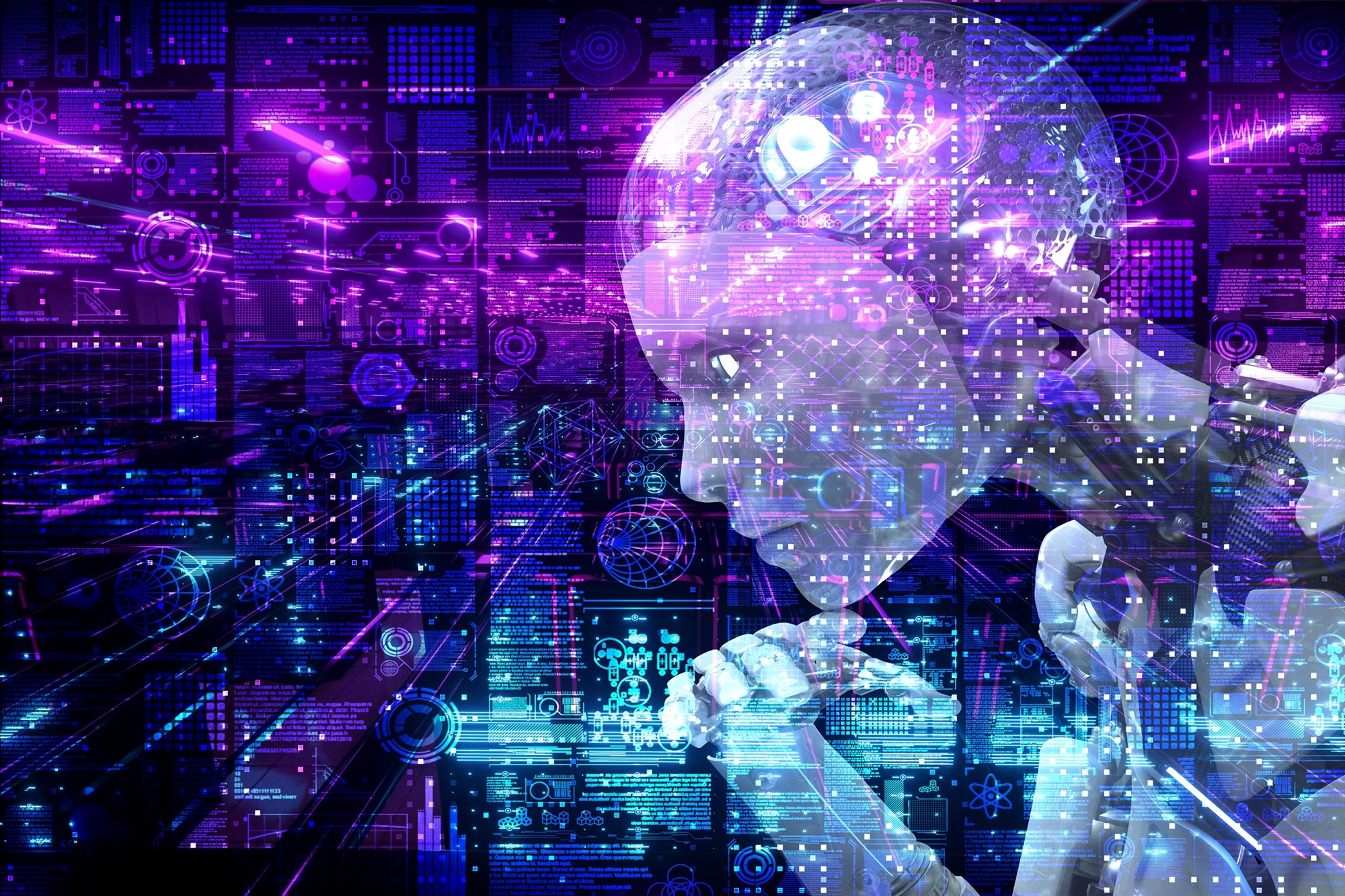IT leaders aren't getting listened to, and now they're ready to walk away

Vijay Sundaram, chief strategy officer of Zoho Corporation, said even though IT
teams have been "indispensable to business innovation and continuity" in recent
years, senior management continue to overlook their input in larger business
decisions. This is despite the fact that 88% of respondents believe IT is more
responsible for business innovation than ever before, while 85% agree IT could
drive even greater innovation in the business if they had a stronger leadership
position. Sundaram noted that the role of IT within organizations would become
increasingly important as hybrid working and decentralized teams became
mainstream. Indeed, 99% of survey respondents said their organization had
already moved to a hybrid model. "This will require the expertise and
involvement of ITDMs to identify appropriate technologies and meet corporate
guidelines in areas like compliance, privacy and security," he added.
How Will AI Technology Change Leadership In The Future?

Data-driven and AI-minded CFOs are already using AI technologies as they predict
and report on financial performance, growth plans, fiscal compliance and
operating expenses. Even Microsoft Excel spreadsheets are tapping into the power
of AI for visualization, dynamic arrays and queries. New AI and machine learning
modeling techniques like forecasting, budgeting and investing will shape the
nature of finance and its structure. Finance and accounting teams may no longer
need accounting clerks to scan invoices and do manual data entry due to
intelligent document processing and RPA systems that can automate repetitive
tasks. CFOs who incorporate AI in their work are in a powerful position to link
predictive analytics with customer behavior. This can result in pricing changes
and higher profitability as well as fraud prevention. EY reports that U.S.
companies have about $100 billion of bad debt (customers who will be late in
paying or will not pay at all) and that a variety of AI tools can be used to
remedy that.
How to Keep Distractions From Hampering IT Staff Performance

It’s important to remember that staff members can't always be totally focused.
“Assume there will be times when teams will seek distractions,” Stockall says.
Stockall suggests holding fireside chats that allow team members to ask
questions within an informal setting. “By stepping out of the formalized
communication channels, leaders can hear firsthand what their employees want to
learn more about as well as hear direct feedback on how the business can do
better.” Jabes believes that when team members are given a set amount of time to
complete a task, they're less likely to get sidetracked. .... Breaking down
tasks into smaller pieces can make it easier to stay focused on a task, Jabes
adds. Enterprises are finally beginning to understand that they need to treat
their employees as individuals first, Galperin says. “When employees feel
empowered to contribute to the creation of their ideal work environment, they
are more motivated and inspired to give the company their best,” she notes. “The
right environment will foster focus and high performance.”
How to navigate the current 5G and IoT threat landscape

For IoT devices, Arora recommends the use of networking segmentation and slicing
to keep devices segregated from potential threats. He also emphasized the
criticality of a differentiated implementation plan, IPS/IDS systems designed to
protect IoT devices and their respective networks, and a thorough and periodic
risk review. I would also urge companies to routinely patch and update IoT
devices, utilize strong password measures and avoid authenticating to company
systems or transmitting data over public networks. Where possible, implement
device tracking and monitoring, and always utilize an employee check-in and
check-out process for handing out IoT devices and returning them. Be sure to
confirm terminated employees have no such devices remaining in their possession
as well. Any given information set is only going to be as valuable as when it
was last released, updated or examined. Threat vectors continually evolve and
new risk variants are inevitable, so make sure to subscribe to vendor alerts and
newsletters and stay up on the latest developments and terms.
India's Revolutionary ONDC Policy On Hold - Thanks To Data Privacy Issues
The policy is still being developed, but it is anticipated to cover a number of
important issues, such as data protection, utilizing platforms with foreign
ownership, and supporting domestic e-commerce companies. An important step
toward promoting open networks for all facets of trading products and services
over digital or electronic networks is the Ministry of Commerce’s recent
introduction of ONDC. To the detriment of vendors, the Indian government
contends that foreign-funded private businesses Flipkart and Amazon currently
control the majority of the country’s e-commerce market. ... On several
topics, including worries about security and data privacy, various parties,
including online retailers, have been looking for clarification. According to
reports, the government is also considering whether to introduce legislation to
control non-personal data. The action is being taken as the government works to
encourage emerging technologies like artificial intelligence and data analytics
and accelerate the expansion of the nation’s digital economy.
New Method Exposes How Artificial Intelligence Works

In a surprising discovery, Jones and his collaborators from Los Alamos, Jacob
Springer and Garrett Kenyon, as well as Jones’ mentor Juston Moore, applied
their new network similarity metric to adversarially trained neural networks.
They discovered that as the severity of the attack increases, adversarial
training causes neural networks in the computer vision domain to converge to
very similar data representations, regardless of network architecture. “We found
that when we train neural networks to be robust against adversarial attacks,
they begin to do the same things,” Jones said. There has been an extensive
effort in industry and in the academic community searching for the “right
architecture” for neural networks, but the Los Alamos team’s findings indicate
that the introduction of adversarial training narrows this search space
substantially. As a result, the AI research community may not need to spend as
much time exploring new architectures, knowing that adversarial training causes
diverse architectures to converge to similar solutions.
Postgres is eating relational
Of course, for many enterprise workloads, the people doing the architectures
actually aren’t employed by the enterprise but get engaged as consultants.
Within the largest global system integrators, there’s that built-in relational
experience and, from my conversations with folks in the industry, this tends to
be their primary reason for pushing PostgreSQL. During and after the pandemic,
there has been huge demand to modernize enterprise infrastructure to make
enterprises more agile and responsive to rapidly evolving customer requirements.
Those global system integrators take the modernization projects and often apply
the technologies that are easiest for them to deploy, netting them the best
margins on their services. We can argue about whether this is actually the best
thing for customers wanting to modernize, but it’s not hard to understand the
underlying logic. Now, if you’re me, working for a document database company,
it’s fair to think this apparent overreliance on relational is more due to
inertia than a concerted attempt to embrace modern data infrastructure.
Bernd Greifeneder – unifying data for maximised visibility and intelligence
Interestingly, the biggest challenge is not technology, despite building
technology that no one has done before. The hardest challenge is always figuring
out how to get the right talent in the right areas. This goes back to this need
to change the organisation with every doubling in size, which has been key to
retaining our entrepreneurial notion. I realised that as we grow towards around
300 people, this doubling in size was relatively easy, because it was the
founding team and some of the first employees, and we all have this
entrepreneurial attitude and desire to get things done and better than the
competition. But then, as you keep hiring and hiring, and the new hires onboard
newer hires, suddenly, with 300 people and beyond that becomes really hard. At
500 people, something hit me – the new guys had no clue anymore of who we are,
why they come to the office every day in the morning, what motivates them. Not
even the mentorship programs we had in place worked. So, I need to make sure
that we are explicit. And then it took me a while to figure out how can I make
it explicit?
5 Ways Banks Can Use Blockchain To Improve ESG Efforts

For ESG monitoring purposes, one of blockchain’s primary uses is bringing a
bird’s-eye view to supply chain management. A more sustainable, energy-efficient
supply chain could deliver profound savings in transportation costs and the
concurrent curtailing of carbon emissions that a better managed, more efficient
system would bring. With distributed ledger technology, transactions at every
step of the supply chain can be recorded and distributed. This brings an
unheard-of level of transparency and traceability to the movement of goods
around the globe. With automated IoT interfaces, data collection is seamless and
less contingent on overworked individuals. This transparency also makes
monitoring ethical sourcing in industries that have long presented a challenge
to regulators, such as seafood harvesting, more attainable. Products, whether
raw or processed, can be tracked early in the production cycle, and the
information is available to end users long before items are even delivered—with
the journey tracked in real time via blockchain.
Edge and cloud: 4 reasons to adopt both

Edge and cloud computing options each have their unique advantages, and the
ideal solution for your team will depend on factors that are pertinent to your
industry and organization. It’s essential to weigh the pros and cons carefully
and to be mindful of the implications for issues like data security and
regulatory compliance, which can vary considerably by industry and the
operations you support. CIOs who haven’t been involved in a hybrid computing
strategy implementation before may want to consider working with a consultant or
managed services provider who has experience with a project of this type.
Someone who has handled similar implementations can provide insight and advice
to help you realize the full benefits and avoid pitfalls. Remember that a hybrid
strategy can allow your organization to achieve performance levels that drive
innovation and attract and retain customers while bringing products to market
more quickly, conserving resources, and adapting to changing workforce
needs.
Quote for the day:
"It is better to look ahead and
prepare than to look back and regret." -- Jackie Joyner-Kersee
No comments:
Post a Comment